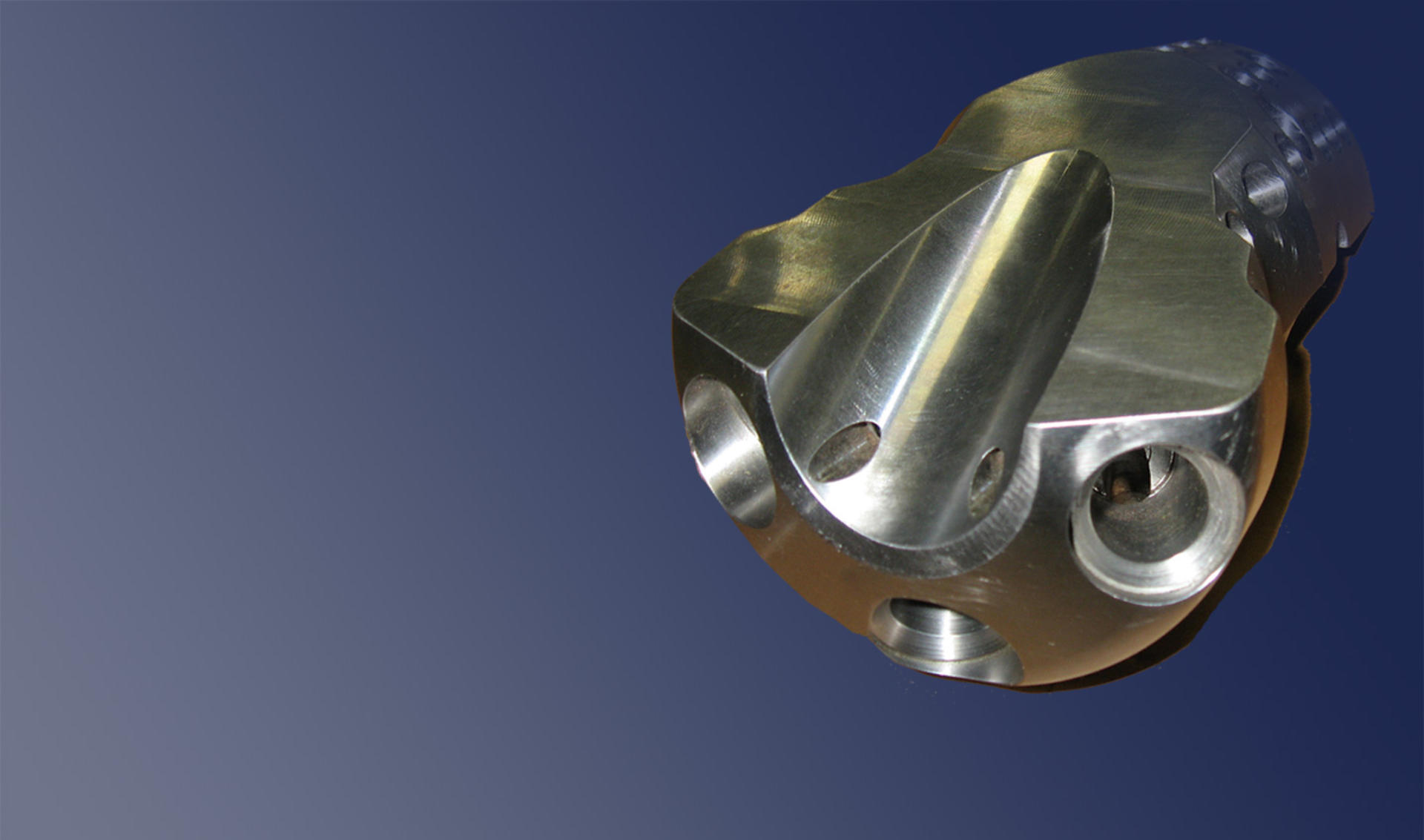
Not many manufacturers can claim to have been cited in a State of the Union address. Center Rock Inc. of Berlin, Pennsylvania got nearly 200 words in President Obama’s speech to Congress on January 26. The maker of rock drilling tools produced the custom drills that were used to free the 33 trapped miners in Chile—the miners whose rescue was seen and celebrated around the world in October 2010.
Brandon Fisher, Center Rock’s president and founder, was already back home from Chile by the time those men were freed. His company’s role in the drama was complete once the 2,000-foot-deep hole had been successfully drilled. At that point, Mr. Fisher, along with Center Rock’s Julie Fisher and senior engineer Richard Soppe, left the site to get out of the rescuers’ way.
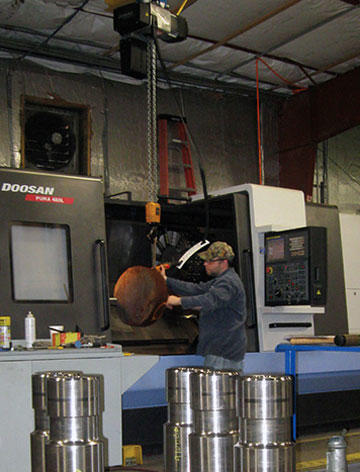
For the Center Rock team, that drama actually had begun back in the machine shop, on the day the Chileans accepted the company’s offer of assistance in the emergency. When news of this emergency became clear, Mr. Fisher committed his company to producing the drills needed for the rescue as quickly as physically possible—at the cost of putting every other active job on hold. Because the forged steel bits used in these drills were tailored to the demands of the rock composition in Chile, the bits were machined from scratch. One might think that a process involving seven different machine-tool setups, not to mention trips to subcontractors in the midst of the machining, could not possibly be responsive—but Center Rock proved differently.
The manufacturing drama at Center Rock is the subject of the latest episode of The Edge Factor, an online show about the excitement and importance of modern manufacturing. That episode is now playing at edgefactor.com. In it, Mr. Fisher describes his company’s involvement in a moment when manufacturing and machining became perilously significant to the lives of 33 menOne of the points The Edge Factor episode gets to make is that technology is not necessarily pretty. Perhaps the most valuable machining operation at Center Rock takes place on a seemingly unsightly machine.
Yet for the metalworking professionals reading this magazine, the more significant lessons of Center Rock’s machining process actually do relate to technology that is sleek in its level of sophistication.
Specifically, the company has a “done in one” machine tool—a Doosan Puma Series MX 2500 ST turning center featuring both a secondary spindle and live tooling. On this machine, a drill bit part could conceivably be taken all the way from raw forging to the heat-treat stage within a single machining cycle, rather than the series of setups needed to produce large bits such as the ones that went to Chile. However, the shop doesn’t necessarily opt for the one-setup approach.
That machine is part of a spectrum of turning equipment in the shop, with the level of multitasking capability increasing as part sizes go down. The newest machine in the shop is for turning only—a Doosan CNC lathe with a maximum turning diameter of 22 inches. A mid-size machine from the same builder offers live tooling but no secondary spindle.
With these machines, Center Rock is exploring the right level of multitasking for its parts. One of the lessons Center Rock shows is this: Just because the company can produce some of its bits with very few setups, that doesn’t necessarily mean that it should.
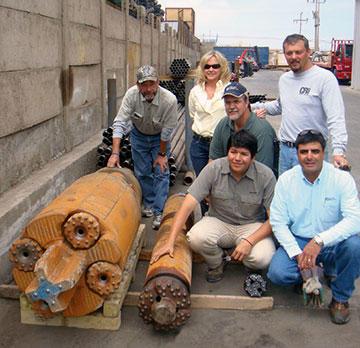
Steve Bungard is Center Rock’s manufacturing manager. “We run a lot of so-called ‘emergency’ jobs,” he says. “This is the first one that was an actual life-or-death emergency.”
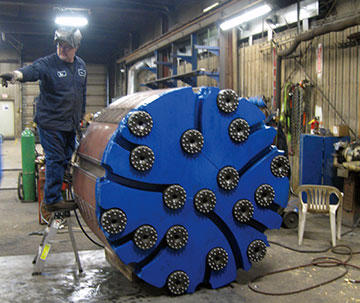
The Chileans accepted Center Rock’s offer of help on a Friday. Employees began setup and machining work that day. The work continued into the night. Heat treat and shot peen suppliers were alerted to the emergency need. Final machining of the bits began as soon as the parts could be retrieved from these suppliers, and the fabrication and final assembly of the completed drills began as soon as the machining of these bits allowed. The completed drills were shipped on Sunday. In the end, manufacturing the drills from scratch took less time than what would be required to transport the drills from the airport in Chile to the remote site of the collapsed mine.
Center Rock’s larger drill bits see the most setups. For one of these parts, the work of turning both ends, preparing the part for a holemaking operation, and detailing the machined hole together entails four lathe setups. The part then goes to an HMC from Mazak for spline milling, milling the rock-cutting face and drilling recesses that hold the carbide cutting elements. This machining center work requires three setups—two before heat treatment and one after.
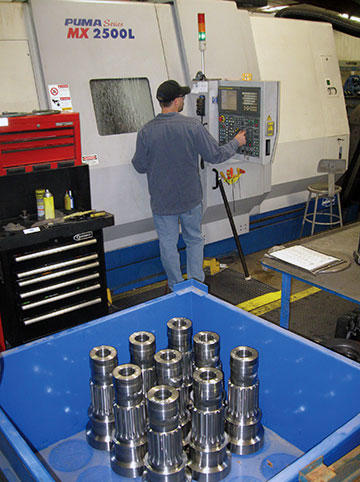
Smaller rock-drilling bits see fewer setups than the sequence described above. This is because of the combined turning and milling capabilities of the shop’s smaller turning centers, which allow the company’s most popular drill-bit sizes to be run more productively. The smallest-diameter bits could be machined (up to the point of heat treatment) within a one-setup process. Given that a single drill requires fewer than 20 bits (often fewer than 10), this might seem like the best method. Yet the shop instead frequently machines its small bits across a series of setups, with work sometimes proceeding through the shop in batches of 100 or more. From Center Rock’s perspective, why does batch manufacturing employing a sequence of setups remain the better approach? The answer to this question is potentially useful for any shop that is evaluating multitask machining capability.
As Center Rock shows, this capability is valuable for reasons that go beyond just single-setup machining. The freedom to perform more machining in one place enhances Center Rock’s production capacity, even if that freedom is not used to machine a part all the way to completion. For example, the smallest bits often receive stem-end turning, pilot hole drilling and spline milling in a single, efficient turning center setup. However, the cycle then stops.
“GibbsCAM Cut Part Rendering lets you compare your cut part with the stock body to determine if you’re cutting where you shouldn’t be, or if you’re gouging. Also, you can save what you have from a previous operation as a faceted body, and use that as new stock. It’s really handy for multi-axis and whenever you have multiple setups or have to move the part from machine to machine.”
Machine simulation shows the inter-relationship between the cutting tool, the part, fixtures, and all moving components of a machine. Webber has not created models of the machines for this purpose, but uses machine simulation to show how the tool approaches the part and how the part rotates. In combination with Cut Part Rendering, simulation provides assurance before actual machining.
Webber Metal Products continues to grow, filling orders from one to thousands of parts. In 1994, the company built a satellite facility, about an hour away from the headquarters, in Platteville, Wisconsin, and in 1997, the original shop moved into its current 120,000-square-foot facility in Cascade, Iowa. With 67 CNCs (and another VMC on the way), the two facilities do gun drilling, lapping, grinding, waterjet cutting, vertical and horizontal milling and turning, and multitask machining, to deliver parts made from all types of materials to multiple industries. Since 1999, GibbsCAM has served them well and helped them grow.
Mr. Brackemyer says, “In addition to programming all our machines, we all know that we’ve greatly reduced our programming time and greatly reduced our setup and process time with GibbsCAM. We also spend a lot less time programming than we used to.”
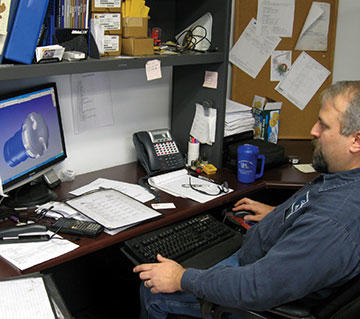
There are various reasons why machining doesn’t proceed any farther toward completing the part within this cycle. The reasons have to do with all of the following factors:
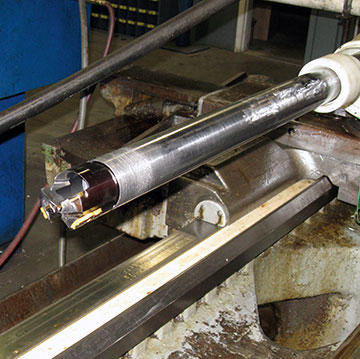
One final important factor affecting the impact of setups relates to where Center Rock earns its income. The company does not just supply a manufactured product, it supplies an engineered product. In fact, increasingly the rock drill is a custom-engineered product, as customers use resources like GoToMeeting to work with Center Rock designers in real time to specify precisely the rock-drilling geometry they want to use. Even when this level of customer involvement isn’t involved, though, Center Rock personnel select or tailor drills to specific customer applications. With its technical expertise and capacity to innovate, the company can deliver high value to customers—high enough value that it need not matter significantly whether seven setups or three go into making the parts.
For Center Rock, the center is the people—including the customers and the core of experienced employees necessary to serve these customers at an advanced level. “People first” is a cliché, but also an easy principle to forget. Fortunately for Center Rock, the company got to experience a reminder of this principle—a brief interlude when the company was focused not on customers, not on employees, but instead was devoted entirely to the fates of 33 desperate men whose lives might yet be saved.
As seen in MODERN MACHINE SHOP Magazine
Capristo Automotive has set itself the goal of enhancing luxury sports cars with high-quality accessories and making them even more unique. GibbsCAM was brought on board when the CAM programming of an INDEX G400 YB could not be managed with the existing CAM software.
Northern Maine Community College (NMCC) has implemented a curriculum that equips students with CNC programming skills using GibbsCAM software, allowing students to earn certification within 9 months and achieve a 100% employment rate.
MUT-Tschamber, a mechanical engineering company in Germany, has implemented Sandvik Coromant's PrimeTurning™ technology and GibbsCAM NC programming solution to achieve higher throughput and productivity.
Toolmaker Rieco System Srl achieves greater machining precision and optimized production time with the help of GibbsCAM software.
SAFA GmbH & Co.KG specializes in the machining of non-ferrous metals, particularly brass, and has developed expertise in machining electrode copper for the production of plug contacts for electric vehicles.
Swedish metalworking company AB Larsson & Kjellberg has embraced 6-axis digital CAM, using GibbsCAM software, to efficiently process production parts for a wider base of customers using their Soraluce FR-12000 milling machine.